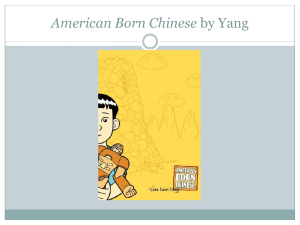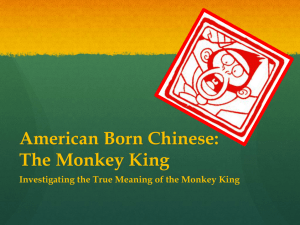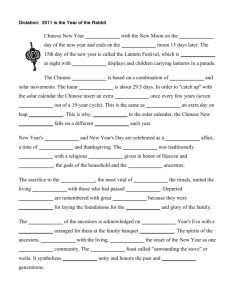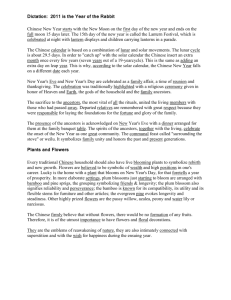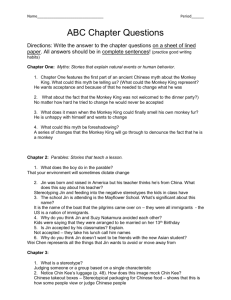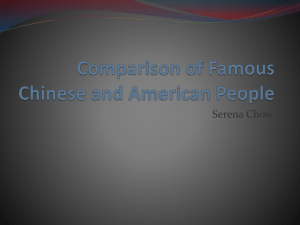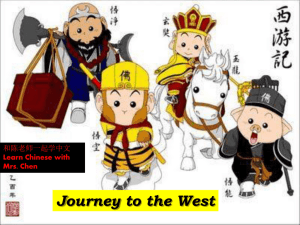The Graphic Narrative - American Born Chinese
advertisement
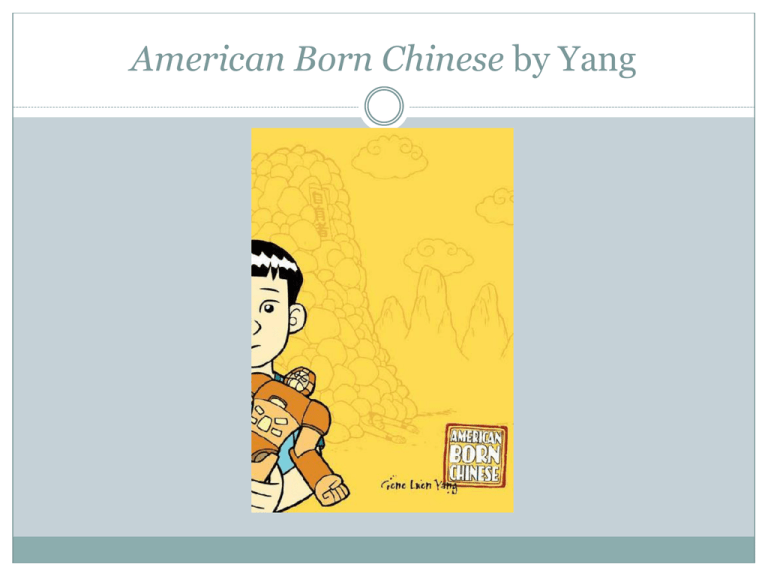
American Born Chinese by Yang Yang’s American Born Chinese In 2006, Yang published American Born Chinese, a graphic narrative comprised of three storylines that eventually unite. The Story of the Monkey King The Story of Jin Wang The Story of Chin-Kee In addition to winning the Printz award for Young Adult Literature, American Born Chinese has garnered both praise and controversy. The Monkey King The Monkey King, or Sūn Wùkōng, is a character in an extremely important Chinese novel, The Journey to the West. Written in the 17th century, it chronicles a journey to India made by a Buddhist monk and his companions. The Monkey King The Journey to the West is based upon an actual pilgrimage undertaken in 629 AD by the Buddhist monk Xuánzàng to India in order to study Buddhist religious texts. After spending a decade in India, Xuánzàng returned to China as a hero and was influential in the Emperor’s Court. The Monkey King In the fictionalized account of Xuánzàng’s trip, he is joined by three characters, The Monkey King, the Monk Pig, and the Sand Friar. Of these companions, the Monkey King presents the most cunning in battle and the most weaponry, including the ability to transform himself 72 ways. This feature corresponds to Jin’s fascination with the Transformer toys that were so popular during the latter decades of the 20th century. Transformers! Yang on The Monkey King Jeff Yang, a columnist for The San Francisco Chronicle, (no relation to Gene Leun Yang) notes that Gene Leun Yang “envisions the Monkey King as more than just a classic Chinese character -- he sees him as the patron spirit of Asian America, which is a thought I've had myself. After all, his epic is a tale of a journey westward, and the character of Monkey, plus his quest for identity and wisdom (and, yeah, maybe a little humility), all feel somehow familiar, like a half-remembered childhood song.” The Story of Jin Wang Jin’s status as an ABC, or American Born Chinese, refers to the fact that his parents are immigrants. For the first nine years of his life, Jin lives in San Francisco’s Chinatown. However, when his parents are able to afford a home in the suburbs, Jin is illprepared for the identity crisis that will ensue. In addition to struggling with others’ prejudice, he has to struggle with his own insecurities. The motif of “tranformation” fits nicely with the transformative powers of The Monkey King. Jin’s “White” Hairstyle The Chin-Kee Show The third storyline in American Born Chinese features a sitcom-like structure, as popular, “normal” Danny contends with the annual visits of his Chinese cousin Chin-kee. Chin-kee is the embodiment of every stereotype that many Americans hold regarding persons of Chinese nationality or descent. He reminds many critics of Long Duk Dong, a character from John Hughes’ extremely popular teen movie, Sixteen Candles. Long Duk Dong Controversy "I do get some reactions to the Cousin Chin-Kee that worry me a little bit," said Yang…. "There's some people that come up and tell me, 'He's so cute, so funny, endearing.' That's definitely not what I was going for," Yang believes that most people understood the purpose of a character like Chin-Kee — acting as the juxtaposition against his popular, assimilated cousin. Controversy "I think the vast majority of the responses are positive, but I have had some Asian-Americans and come up and tell me I was perpetuating the stereotype by explicitly showing it," he said. Identity Construction Yang notes: "I think the Asian American community right now is in the midst of defining itself. For a while I think we were all trying to be white. Then there was a period of time when we were trying to be black. And now we're finally coming up with something that's truly our own." American Born Chinese American Born Chinese American Born Chinese American Born Chinese
